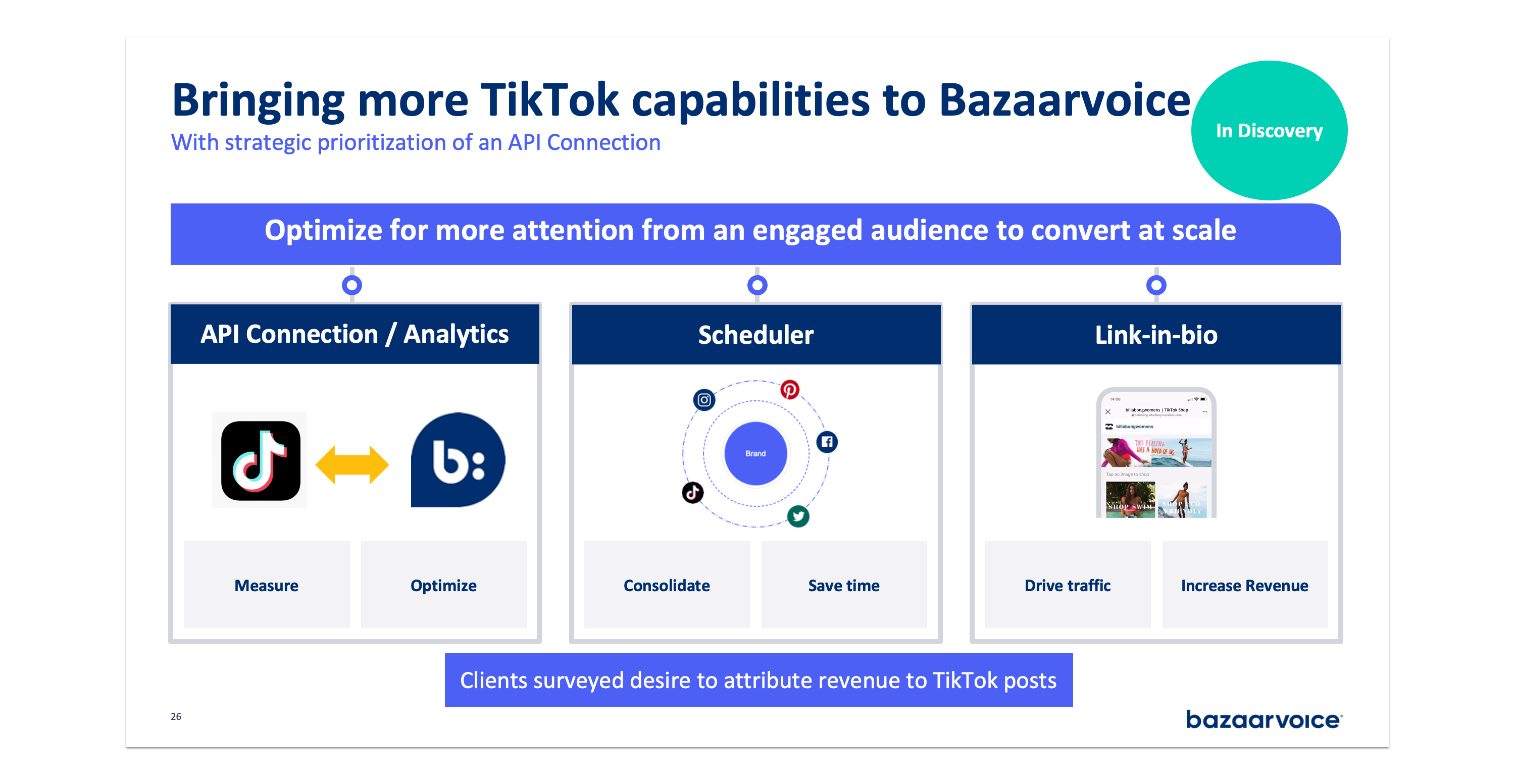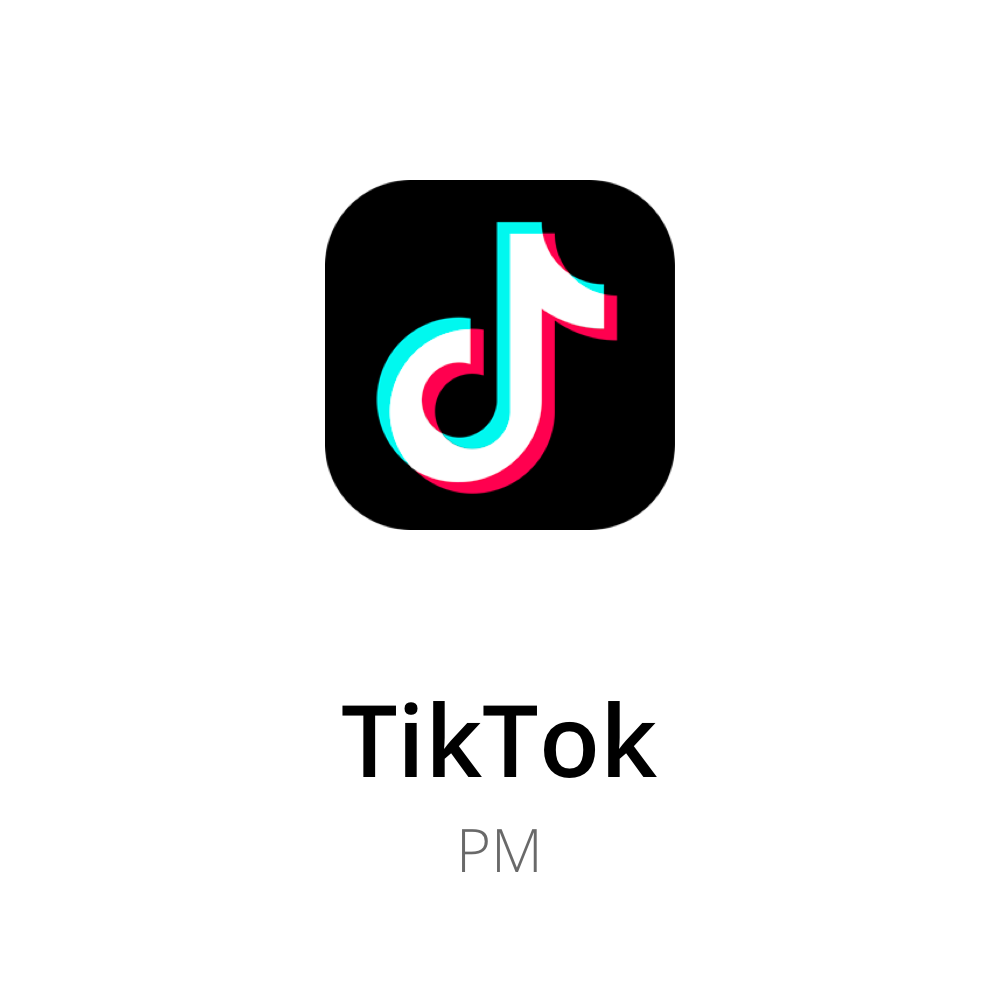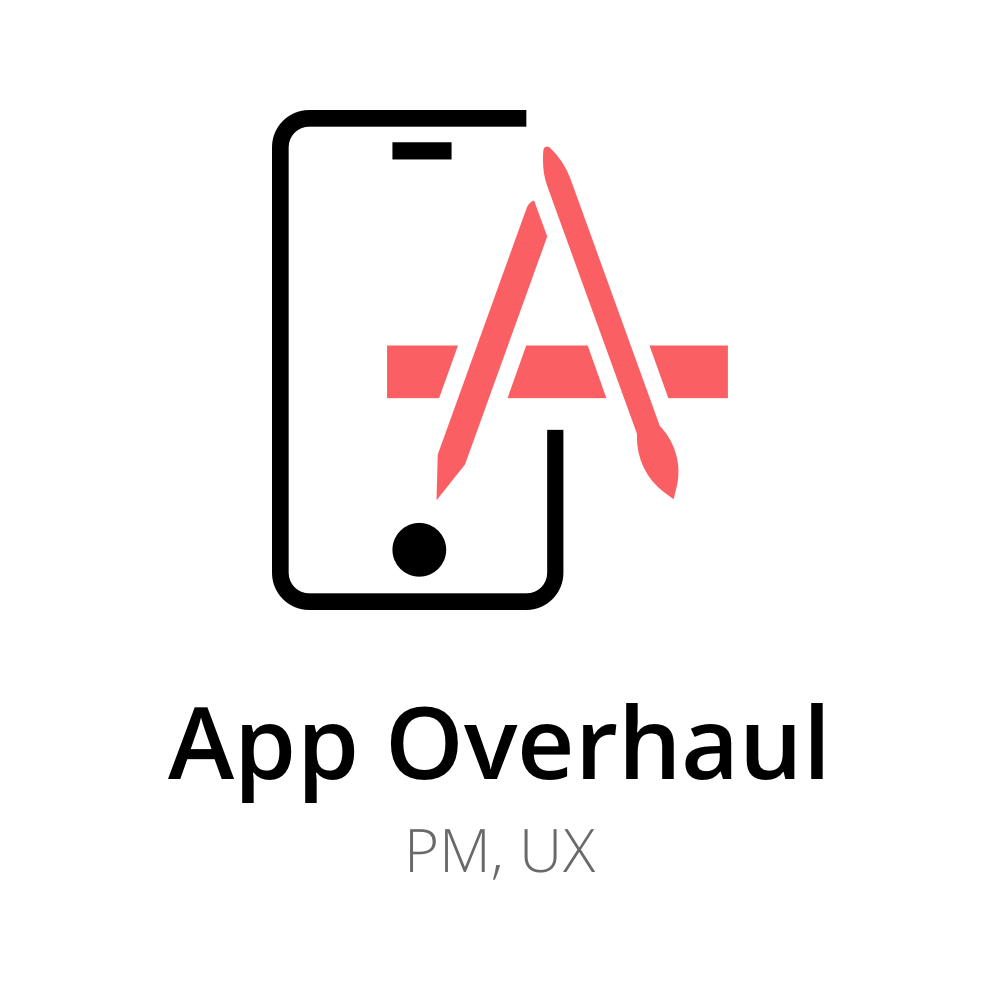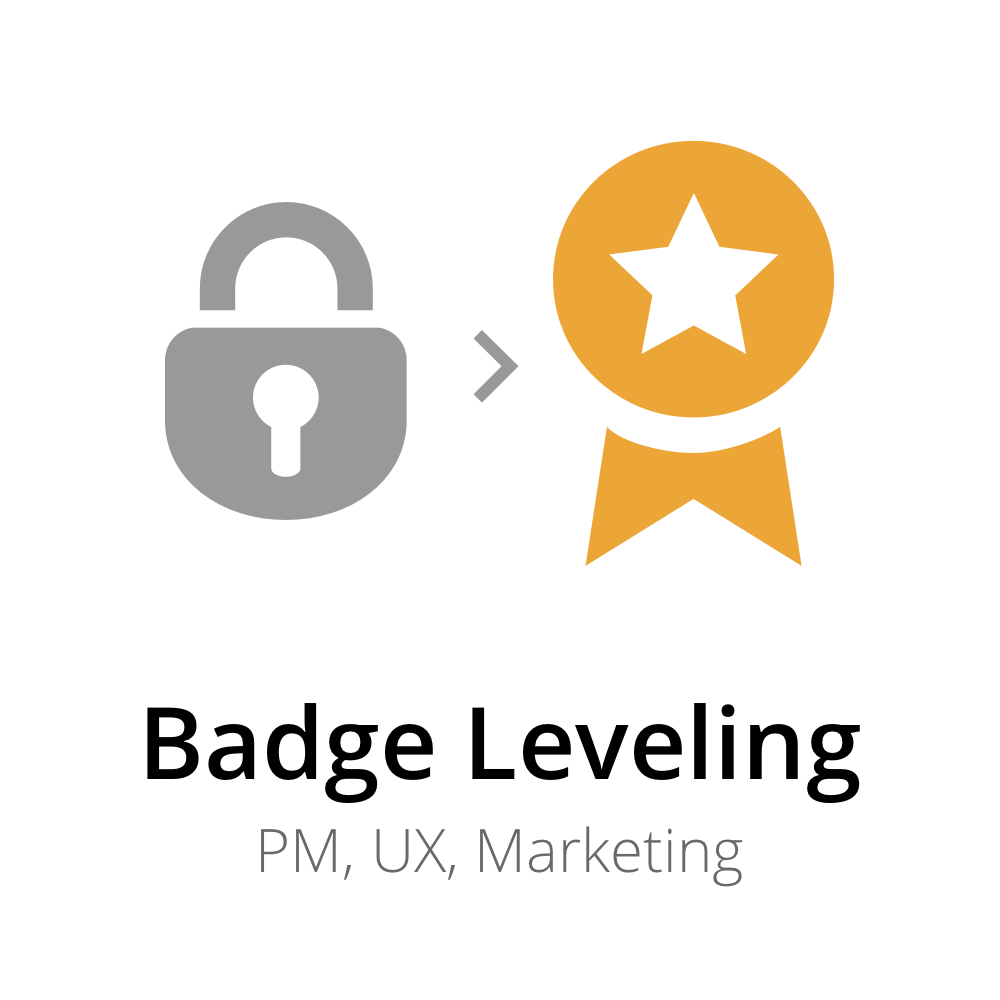TikTok Roadmap
Role Involved
Research, PM, GTM
Problem
Clients were interested in ways they could leverage Bazaarvoice to leverage TikTok content to drive traffic and revenue given its strong rise in popularity during the pandemic. We had limited resourcing across go-to-market teams and even more limited resources due to team attrition a la ‘The Great Resignation’. Another challenge to offering TikTok support to our software suite was that compared to other social networks, TikTok had a very limited API available and we had little to no partnership established with their team.
Strategy
TikTok had been an opportunity during a time where we were going through an acquisition, managing knowledge transfers across product, engineering, sales, and customer success. To keep tabs of the opportunity and better inform stakeholders of its priority and potential costs, I did some initial research by distributing a survey via an in-app notification targeting pages relevant to our social media persona.
This survey asked a series of questions to give us a baseline of how many of our clients were publishing content to TikTok, what goals they had with TikTok, how they were sourcing content from TikTok, and their perceived value leveraging us for their TikTok workflow in a few different areas. We were particularly interested in use cases that aligned with our existing feature suite - scheduling content to TikTok, hosting a shoppable landing page leveraging TikTok content, and empowering clients with TikTok reporting. In addition to the survey, I also sent follow-up emails and booked a series of follow-up calls to dig into a few clients’ responses.
Through this research we learned a few key findings. About 70% of our respondents were regularly publishing content to TikTok, often on a weekly basis. Clients were eager to leverage this channel to drive traffic and revenue back to their eCommerce site, but were struggling to do so. Limitations they ran into was the time it took to create video content for TikTok, attributing metrics back to TikTok to justify that time, and operating in a creator-driven network as a brand.
To tackle some of these pain points, I scoped out a client-facing roadmap that aligned with our existing strengths as a company. In particular, given our engineering and design resourcing constraints, it was important to land on a roadmap that both addressed competitive pressure in this growing space, while also accounting for speedy iterations and fewer dependencies.
In that regard, we communicated a three-pronged release based on high confidence customer feedback and engineering input:
- First, we set out to invest in a new OAuth connection so clients could connect their TikTok accounts to Bazaarvoice. This would establish a strong foundation where we could better pull data to guide the roadmap, leverage any initial API wins TikTok had released for 3rd party support to reduce the build time for follow-ups, and greatly improve our ability as a new TikTok partner to respond to any net-new API changes should we need to pivot our roadmap. To incentivize clients to connect with us, we would provide light metrics, supported through the API, to address one of client pain points around understanding what TikTok content was performing best. Best of all, executing this release would need very light engineering resources and no design resources. As part of this release, we wanted to position it in relation to our overall strategy and where we were investing so both prospects and existing clients could be informed that TikTok was a priority for us as a company and we were planning to invest in a variety of ways to help them succeed with this new growing channel.
- Second, we planned to build out a scheduling workflow, leveraging our initial OAuth connection to reduce engineering effort to address another client pain point - saving clients time when it comes to managing and publishing TikTok content assets. We already had achieved stickiness with scheduling workflows across other social channels like Instagram, so adding TikTok scheduling would help consolidate all their social media publishing needs within our desktop and mobile apps. Similar to our first TikTok release, prioritizing this release within the roadmap would further allow us to minimize design resourcing asks because we could leverage our existing scheduling patterns across desktop and mobile. This was key as our design team was recovering from attrition and needed time to train new talent.
- As the last component of our roadmap, we wanted to expand further on our TikTok publishing and reporting capabilities. A key differentiator of Bazaarvoice in general, and one of the main ways we frame our offerings, is how we were able to connect the dots between eCommerce and social media teams. In that regard, we wanted to invest in ways for clients to leverage our tools to productize their TikTok content in order to drive tangible traffic and revenue to their eCommerce sites. To do this, we would need to leverage some of our existing eCommerce display technology to create a new TikTok-minded store display. Luckily, we had a successful product that satsified a similar use case for Instagram called Like2Buy. This meant we could repurpose some existing features to further cut-down development time to ship client value sooner. That being said, this particular item involved dependencies to ensure we properly attribute the revenue to TikTok, but by prioritizing this later in the roadmap we would be able tackle parts of those development challenges along the way in our earlier releases. In addition, we were able to use that extra time to continue to drive excitement and collect client feedback to inform this larger, later release. This concept tested very well with clients, with over 30% of our surveyed clients responding that it was the use case they were most excited for.
Through this go-to-market approach, although we continued to be hit with resourcing constraints and other post-acquisition related challenges, we saw a huge positive response from clients. Prior to alignment on our roadmap and messaging regarding TikTok, we had seen a trend of losing new deals and some churn to competitors who had started investing in TikTok solutions earlier than us. After training our internal teams using some of the client-facing messaging above, we were able to greatly minimize this trend and start winning new deals and early renewals specifically because of some of these roadmap commitments.
